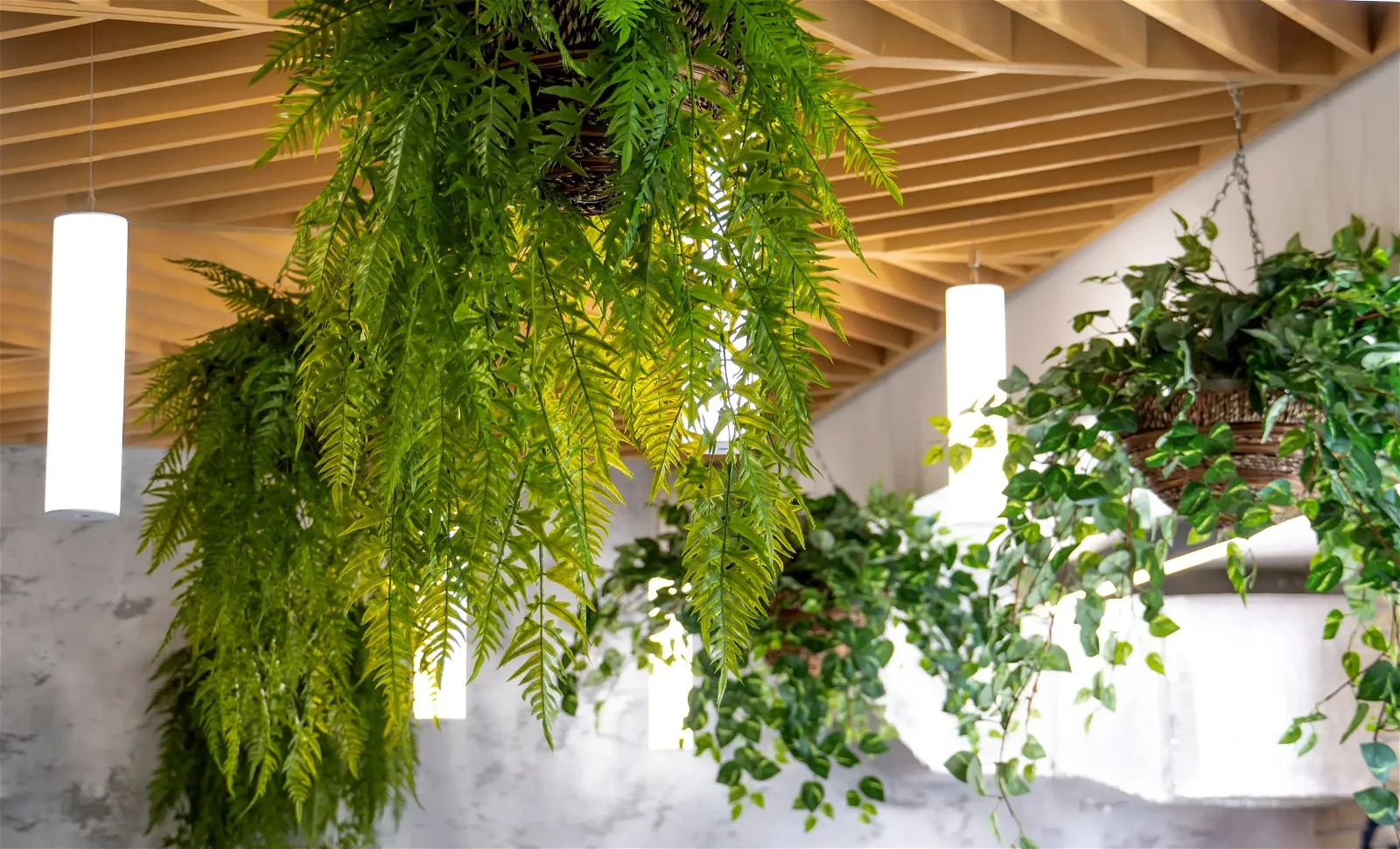As we go full steam ahead into the new year, a large portion of workers remain at their home-working desks. But with latest Government guidance suggesting a return to the office, the full-time working week seems to be growing ever larger on the horizon. This has sparked mixed response – some gladly welcoming the return, some a little more apprehensive. So how can we soothe the anxieties of those returning to our towns and cities? What role can architecture and design play in this? One answer to this could be biophilic design.
Biophilic design can provide respite and joy in our work, home and community spaces. According to our partner and architect, Richard Paynter:
Human beings need nature in their everyday environments, but we often spend our lives in spaces that are predominantly man made and alienate us from the natural world. Biophilic design can have a demonstrable impact on our mental and physical wellbeing, improving our lives and community in countless ways.
The World Health Organisation estimated that stress-related illnesses such as mental health issues and cardio-vascular disease were the two biggest contributors to ill health in 2020*. The introduction of biophilic design to buildings provide people with ways to reduce and release their stress. For example, introducing roof gardens for employees to spend at lunch time and flourishing plant life into each indoor space. These have an impressive array of health benefits – such as increased concentration in workers and students, increased learning ability and productivity and improved patient recovery times in hospitals.

Biophilic design creates environments that offer a more natural and inherent connection to nature. It employs natural features such as internal planting, green walls with plants and mosses and natural finishes such as timber and natural fabrics. It also visually connects and facilitates access to natural outdoor spaces. This works to create internal harmony – there’s a huge body of research that suggests that this has demonstrable health benefits for everyone.
Lighting fixtures can also benefit from biophilic logic. They can be installed in varying colour temperature and brightness to reflect our circadian rhythms. This can naturally enhance our energy levels by allowing for more natural daylight in the daytime, and less blue light in the evening. Following this pattern matches our natural energy levels throughout the day.
Densely populated cities are infamous for contributing to the rise of ill-health caused by poor air quality – and this can also be managed and reduced by incorporating biophilia. We can use plants to improve air quality in the room by increasing oxygen and reducing toxic fumes. Internal spaces can also be enhanced by aromatic fragrances, which cater to our sense of smell and wellbeing. At street level, plants and trees can help reduce levels of toxic fumes, making them healthier and more welcoming.
Whilst biophilic design primarily addresses human health and wellbeing, it is a natural extension of energy related strategy and sustainable design goals. At Barker, we have a dedicated team of experts that can help you achieve your sustainability goals – and biophilia could be a part of this strategy.
